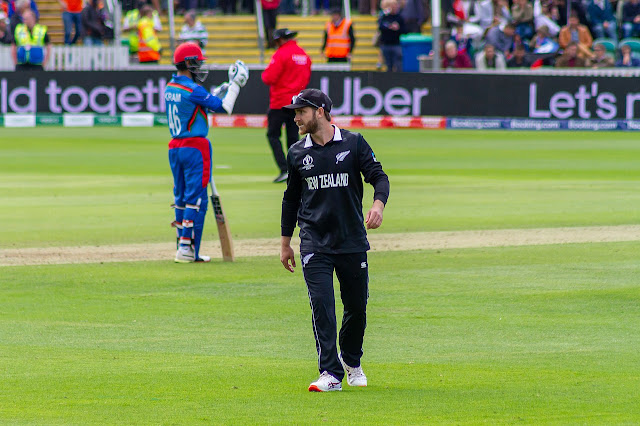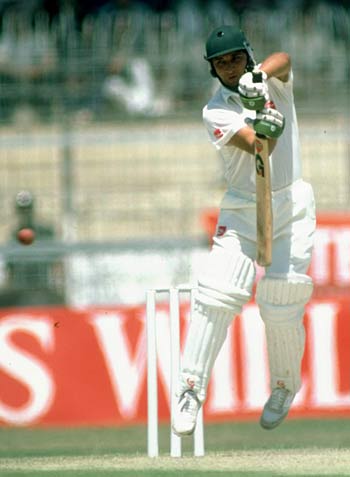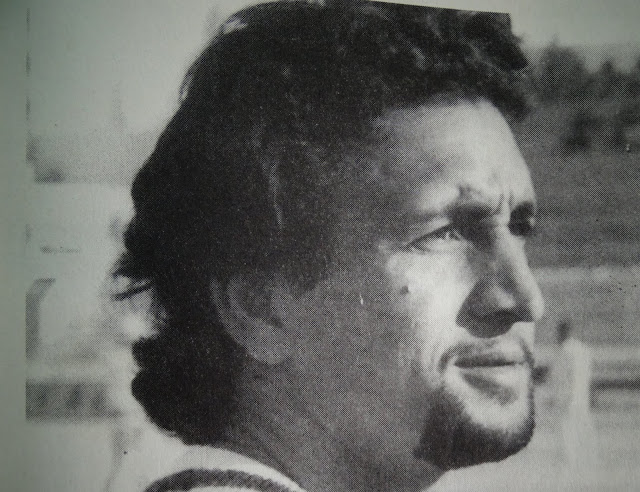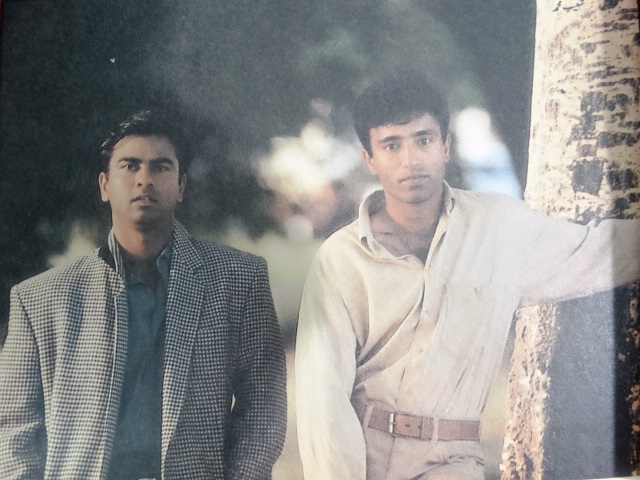Many cricketers have declared him the true legend of Cricket and he remained a hero of modern cricketers as well. This guy was so special when in full mood. Garry Sobers minimal foot movement, great follow-through, the ball ricocheting off the boundary boards as not a man moved. The way he moved was magical; a lithe, lissome, loose-limbed creature. Just to be able to carry off the whole thing must have been a triumph.
His epic innings for a World XI against Australia at the MCG at New Year in 1972, when he was at full mood by scoring 254 of the finest runs you will ever see. He was a genius at work against some of the best bowlers in the world. It was described by Bradman as ‘probably the greatest exhibition of batting ever seen in Australia’.
Garry Sobers was the supreme all-rounder, an almost mythical figure who could bat, bowl quick, bowl swing, bowl cutters, bowl spin, catch pigeons, play golf and of course famously carouse. You would not recommend to a young player today all aspects of his self-confessed love of life. The gambling has obviously been a bit of an issue for him – but if he was a little bit late of a night, he felt he owed his teammates a good performance the next day.
So, perhaps that side of things did not do his game any harm. His 26th and last Test century against England at Lord’s in 1973 was apparently scored after a night on the tiles. In contrast to today’s hard-headed world where winning and stats are everything. There was a certain romance about the way he played to entertain.
Of course, this did not always work out to his advantage – there was that infamous declaration against Colin Cowdrey’s England team at Port of Spain in March 1968, which cost West Indies the match and ultimately the series – but the game was better for it. In the balcony, he was frustrated all alone and Caribbean press rated the declaration as a war criminal.
It was entirely appropriate that he should be the first man in the history of the first-class game to hit six sixes in an over. Therefore, on 31 August 1968, he smashed six sixes to Malcom Nash. Has there been a more versatile or natural cricketer? His status as the greatest ever Test all-rounder is rarely if ever questioned. Jacques Kallis’s figures bear comparison but Sobers was more of a front-line bowler and more capable of winning a match.
For most of his a career he would have been worth picking as batsman or bowler. There was nothing negative about his play. He didn’t use pad-play and he ‘walked’ if he knew he was out. Bradman said he saw no one hit the ball harder. He was largely untroubled by the best and fastest bowlers of his day – Ray Lindwall, Keith Miller, Fred Trueman. You name them – and even in an era before helmets he wasn’t in the habit of being hit on the hands or the body.
He was largely uncoached. Born in humble circumstances in Barbados, he was brought up as one of seven children by his widowed mother. When he was five, his father having been killed in the war while serving on a merchantman that was torpedoed in 1942. Moreover, one of his brothers died with an accident with a Kerosene lamp. His brave mother strongly holds the family, and hence, 14 years old Garry was a gopher in a furniture factory. That trouble days could not de-motivate him to playing cricket.
Even so, he was playing for West Indies by the age of 17, chosen initially as a left-arm a spinner who batted low in the order; just four years later, having moved up to number 3, he was breaking the world Test record by scoring an unbeaten 365 against Pakistan at Kingston, Jamaica. True, the bowling was not the toughest, but then nor had he previously scored a hundred for West Indies.
When Garfield Sober's record eventually fell, to Brian Lara in Antigua in 1994, he was on hand to witness the handing over of the baton to his young protégé. It is hard to imagine that he could ever have played differently to the way he did. But he was profoundly affected by the death of his West Indies teammate Collie Smith in a car accident in 1959 when Sobers was at the wheel.
‘In all my innings, I played with him inside me,’ Sobers said. These days, cricketers are used to the idea of playing all year-round, but it was less common before air travel made the world a smaller place. Garry Sobers was among the earliest jet-age players and throughout his pomp, he maintained an amazingly full schedule.
A cricketing genius played domestically with great success in England for Lancashire League teams. And later for Nottinghamshire, and for South Australia in the Sheffield Shield, all the while continuing to perform for Barbados and West Indies. Of course, his body felt the burden in the end. But he was naturally fit and amazingly did not miss a Test match between 1955 and 1972.
His record against England was astonishing. In 36 Tests against them, he scored 3,214 runs at an average of 60.64 and took 102 wickets at 32.57, as well as 40 catches that he would have taken with minimum effort. His performances in the 1966 series in England must rank among the finest of all time: 722 runs, 20 wickets and 10 catches. But he also averaged more with the bat than the ball. Which has always been one of the best measures of an all-rounder’s worth – against both Australia and India.
At the time of his retirement in 1975 – the year he was knighted by the Queen at Barbados Garrison Racecourse. His career tally of 8,032 runs in official Tests had not been better but that haul takes no account of the many runs he also scored in matches for the Rest of the World against England in 1970 and Australia in 1971–72 that ranked as Tests in all but name.
Indeed, for several years England matches counted in the Test records before being reclassified on the insistence of the game’s rulers. His regrets must be that he missed out on the riches the modern game has had to offer. Just imagine how much he would fetch in an IPL auction – and that, after taking over from Worrell, West Indies did not really progress under his captaincy.
Although he was hardly the only great player for whom leadership did not work out. Garry Sobers had little enthusiasm for the politics that motivated many West Indies players. Some of whom he disappointed by visiting Rhodesia and not criticizing the Caribbean rebels that toured apartheid, South Africa. He has numerous cricketing achievements. In 1964, he was declared Wisden Cricketer of the Year. Then in 2000, he was selected as one of five Wisden Cricketers of the Century.
Overall, he played 383 first-class matches, in which he scored 28,314 at 54.87 with 86 hundred, 121 fifties, 407 catches, including career-best 365* against Pakistan. Moreover, his bowling stats in first-class cricket is very impressive as well, by getting 1043 wickets at 27.74 with the best of 9 for 49, including 36 times five wickets in an inning and one time 10 wickets in a match. These stats clearly show, how was he truly legend cricketer.
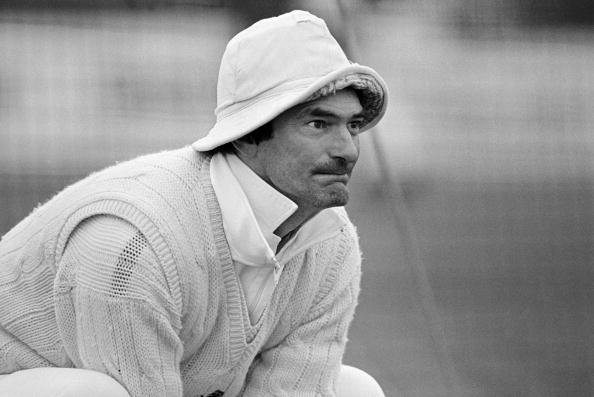 Alan Knott was born on 9 April 1946 at Belvedere, Kent. He was a former wicket-keeper batsman who represented England at both level in Tests and ODI.[/caption]
Alan Knott was born on 9 April 1946 at Belvedere, Kent. He was a former wicket-keeper batsman who represented England at both level in Tests and ODI.[/caption]

























